site search
online catalog
WHITNEY PLYMOUTH NAVY RIFLE WITH BAYONET AND SCABBARD

Hover to zoom

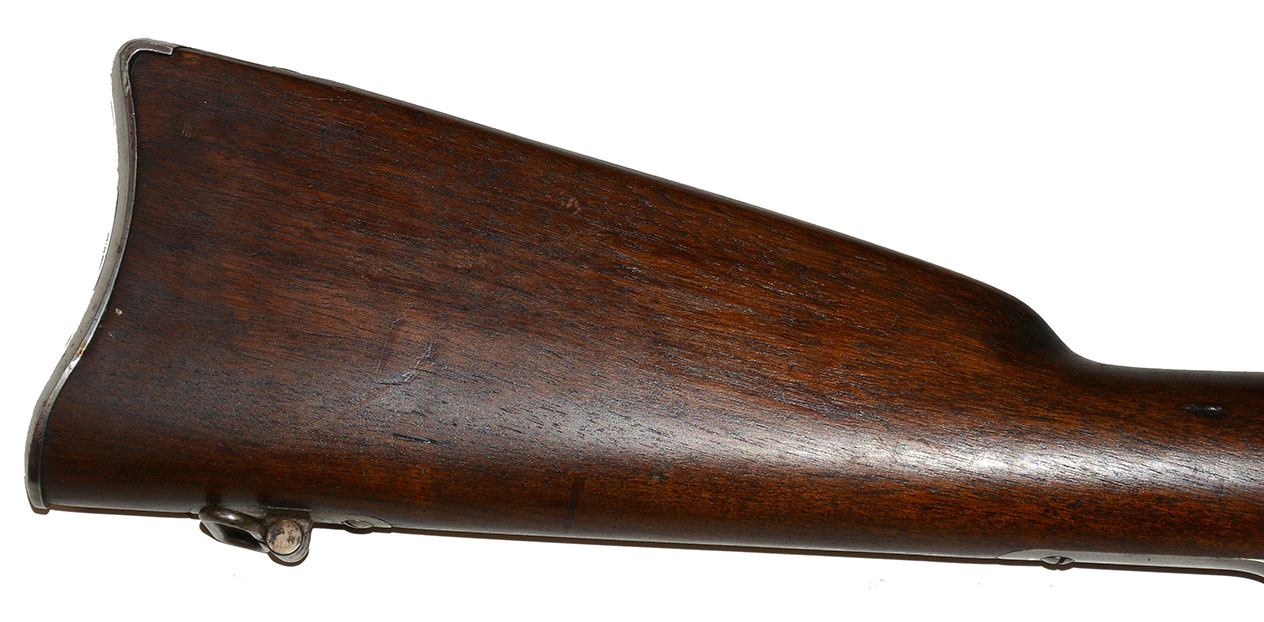
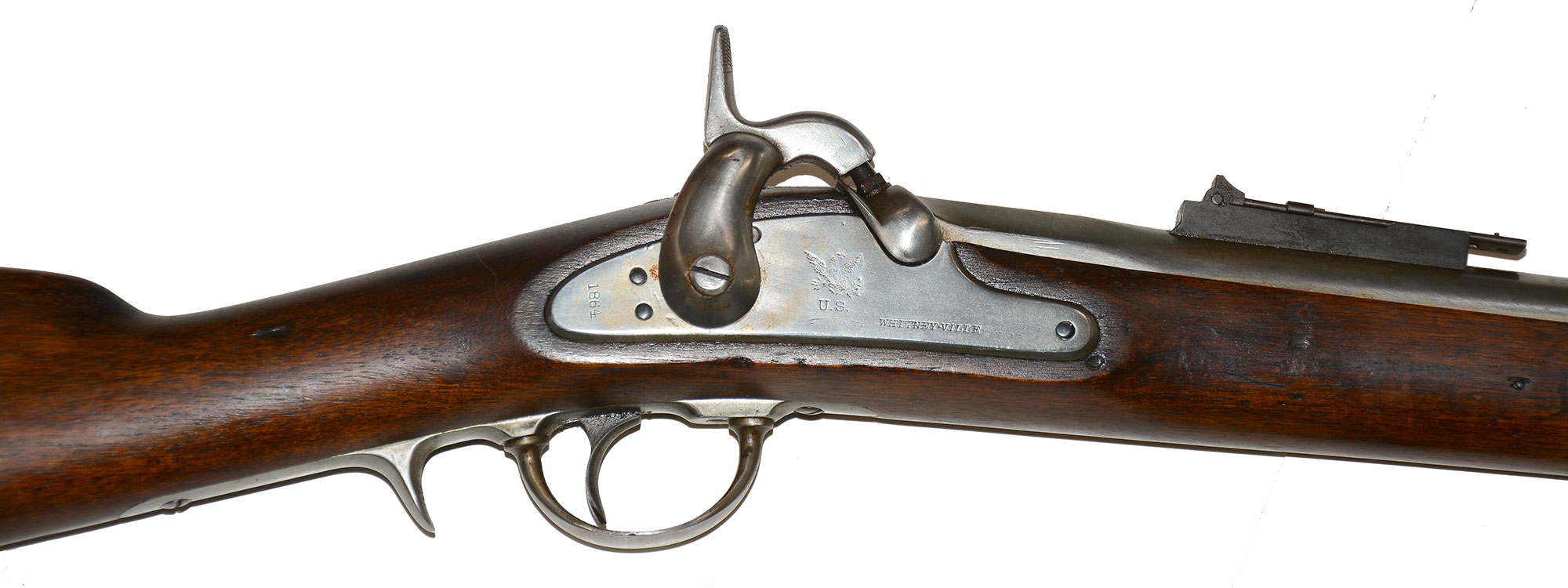

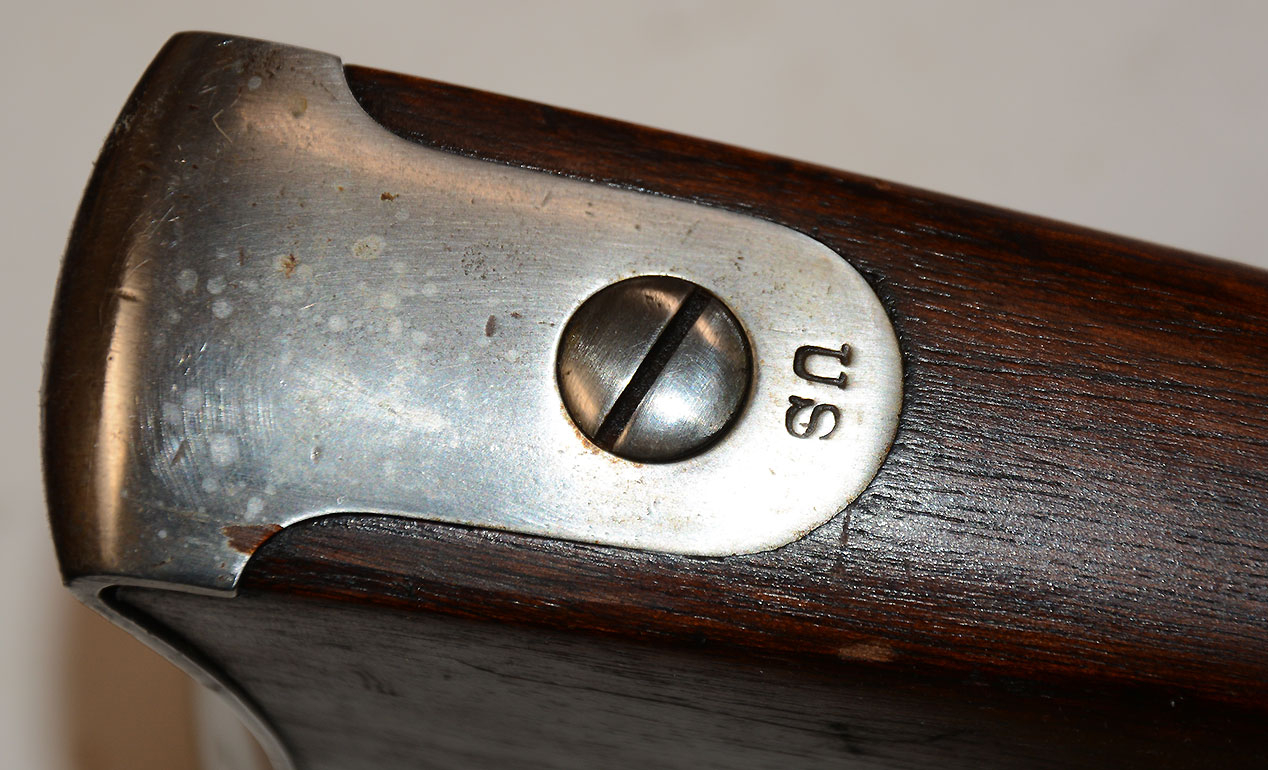
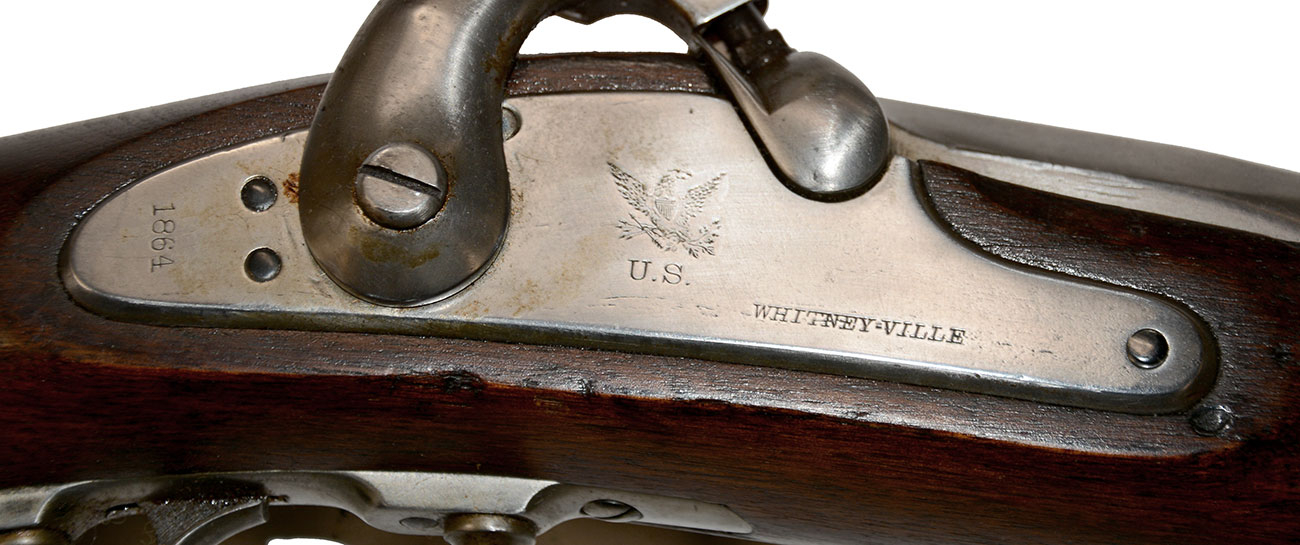

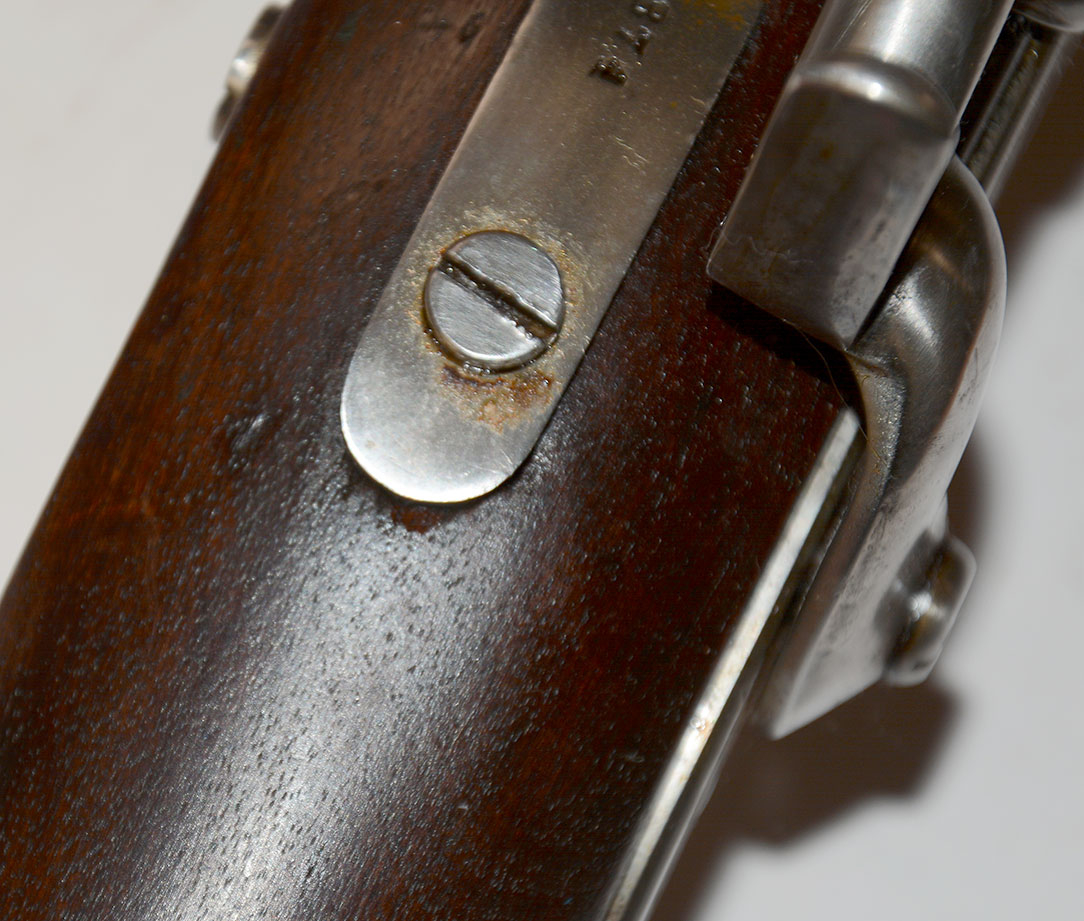
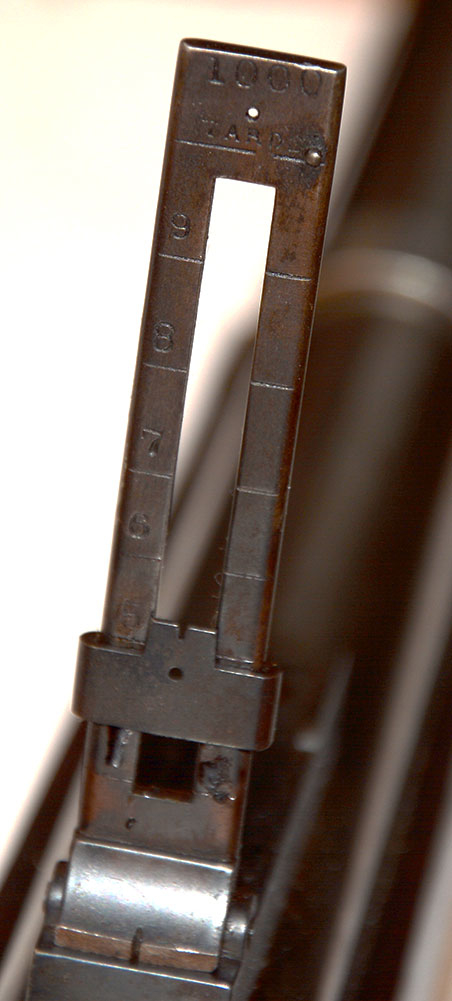
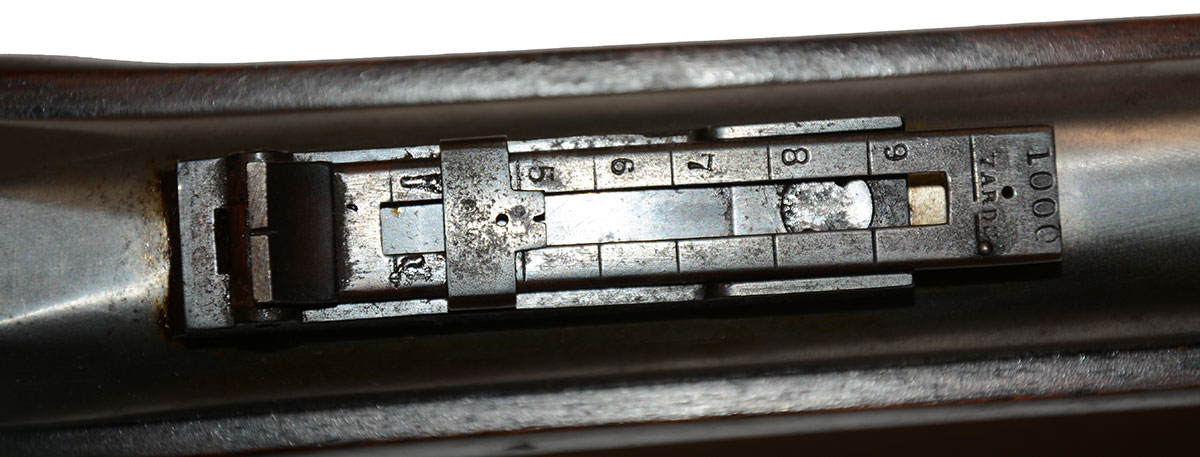

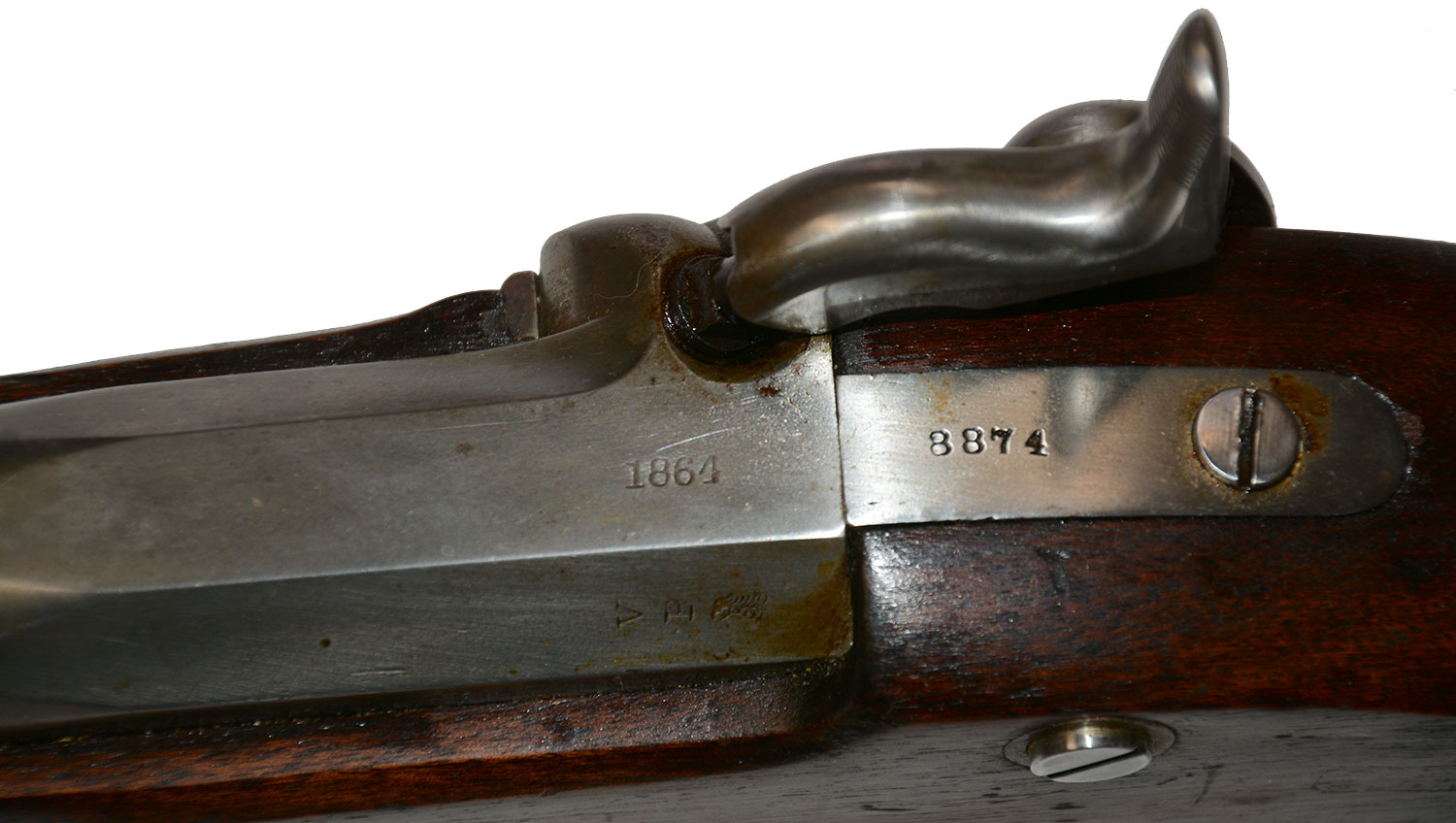
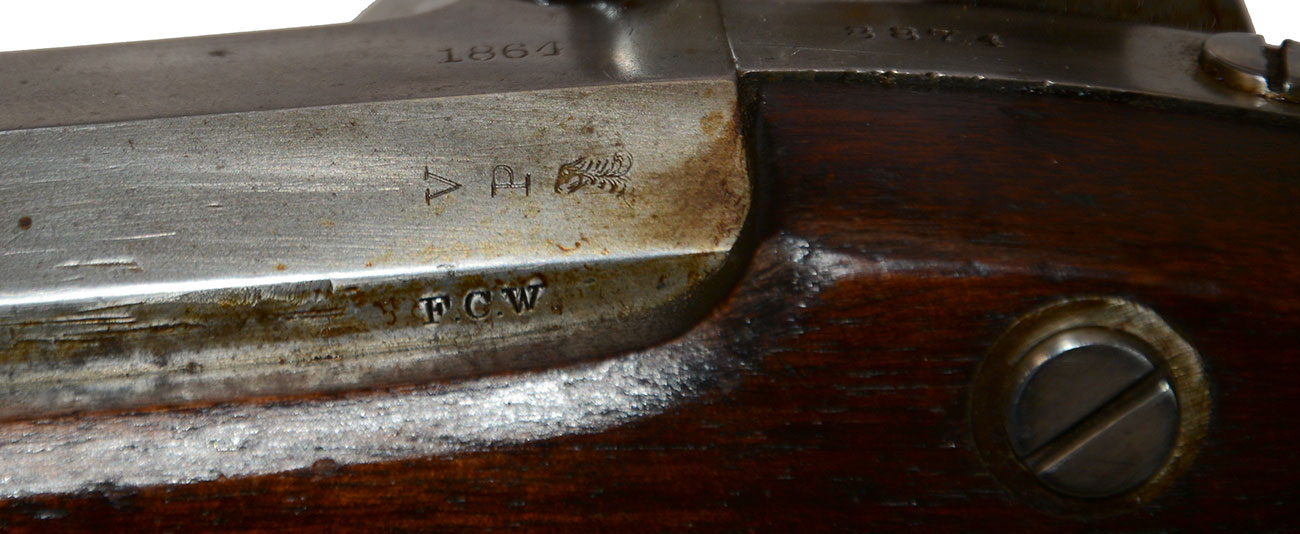
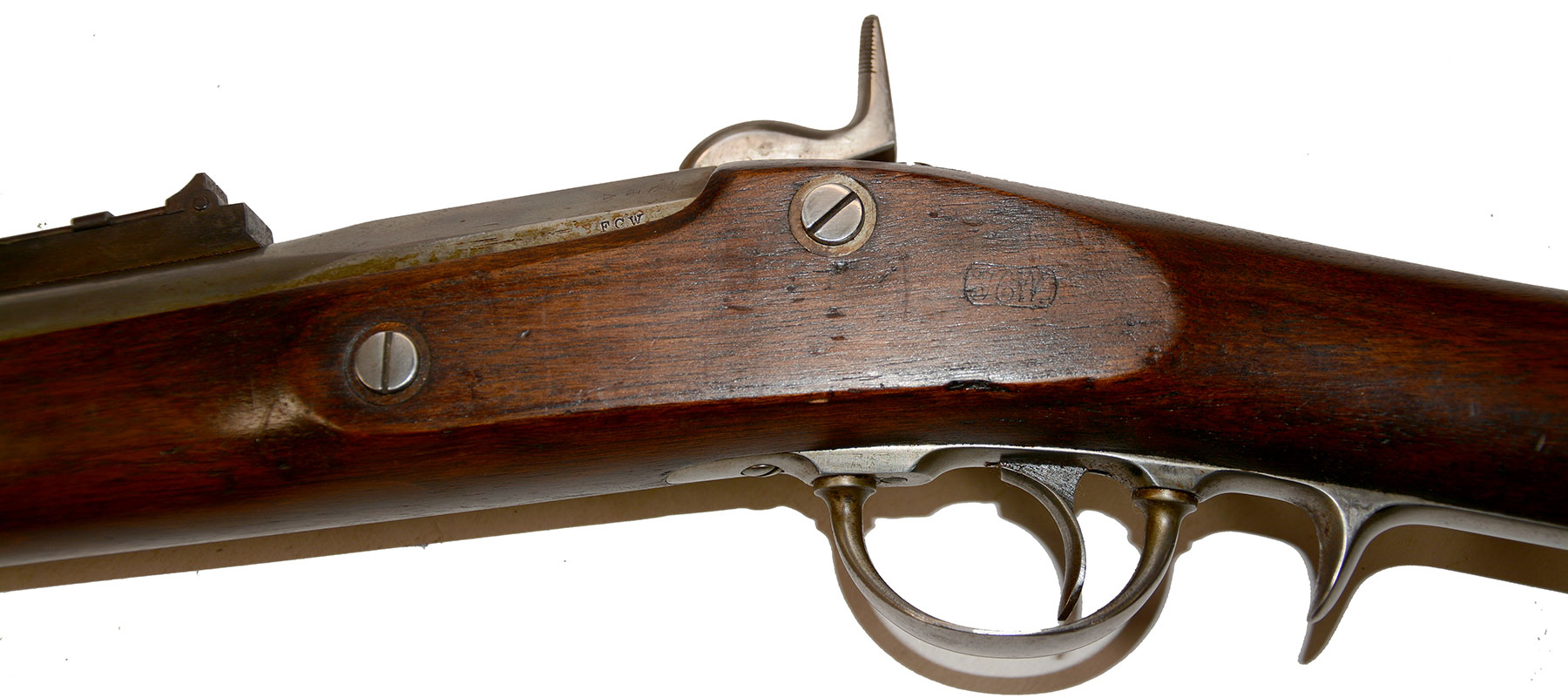
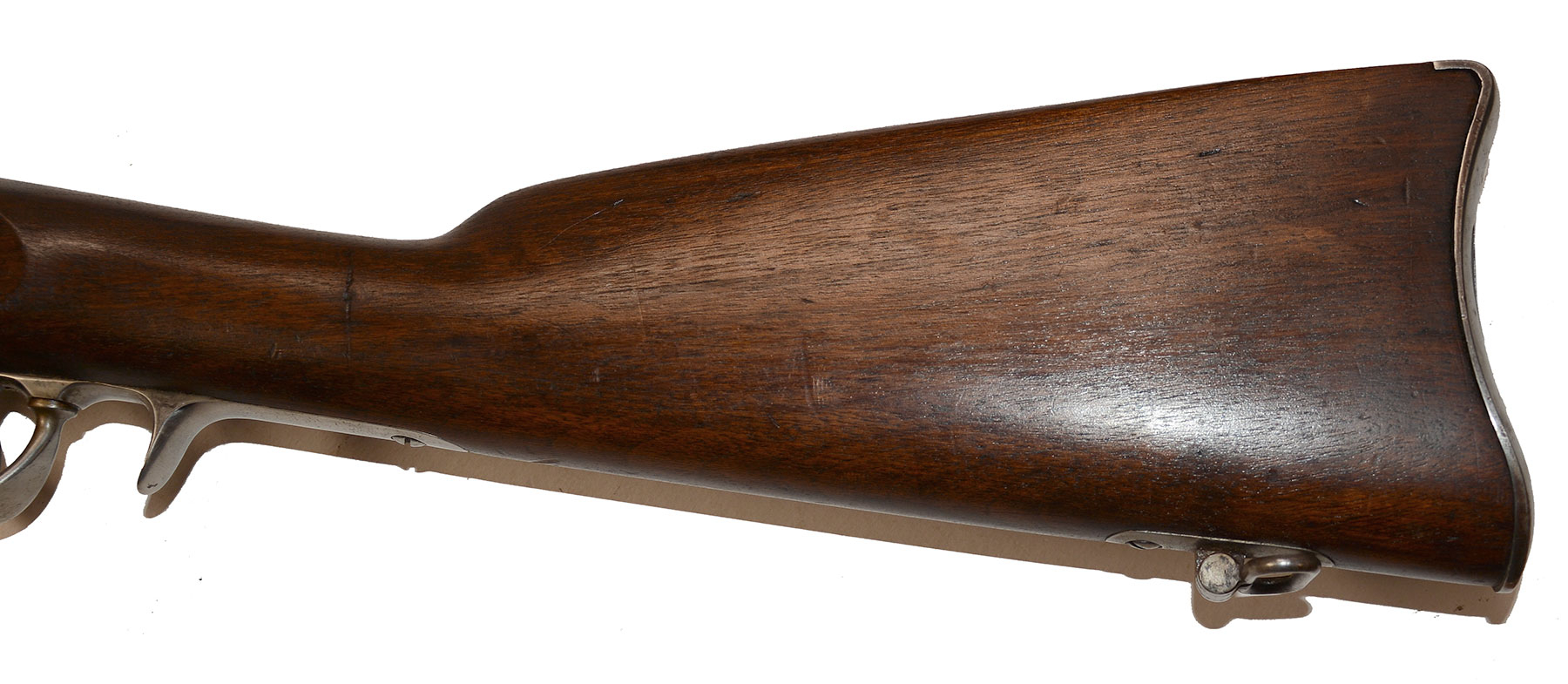

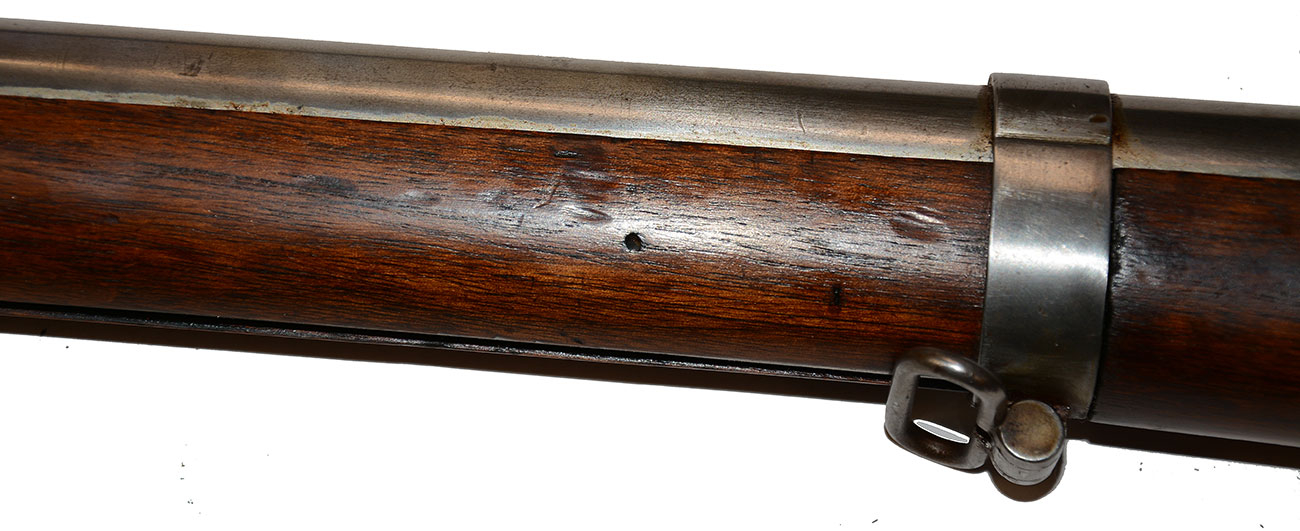

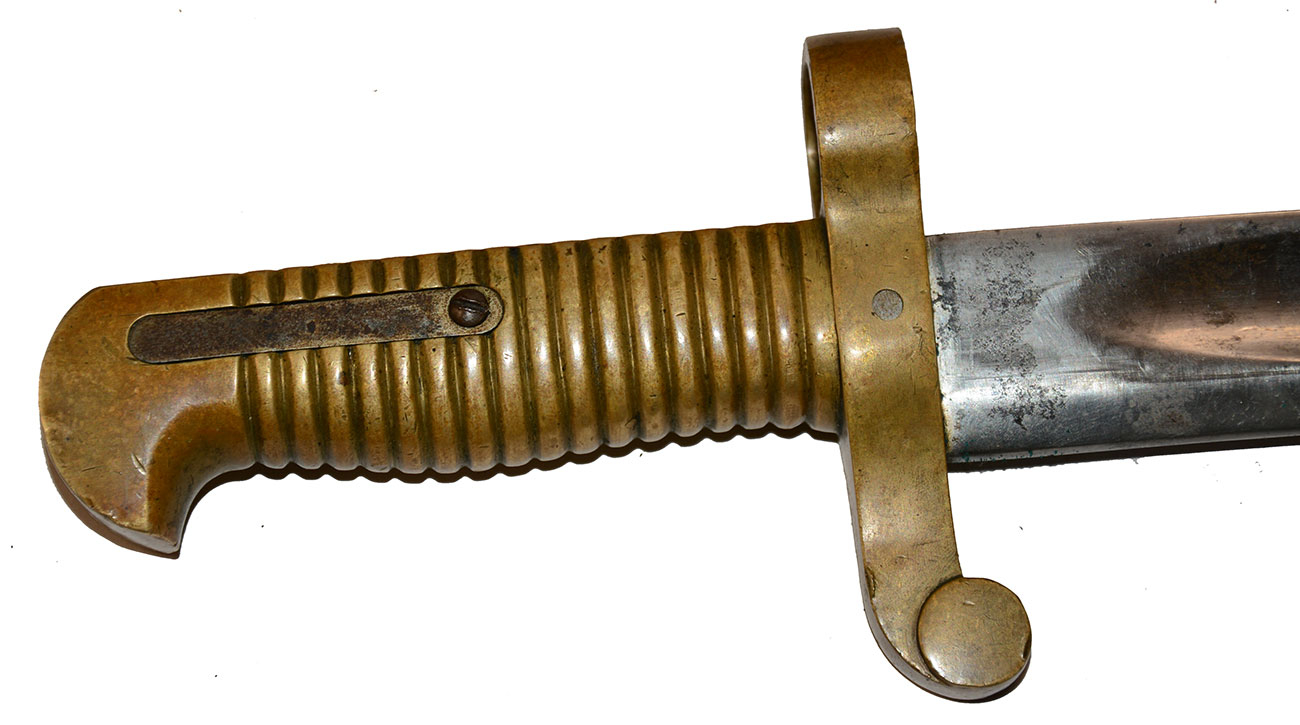
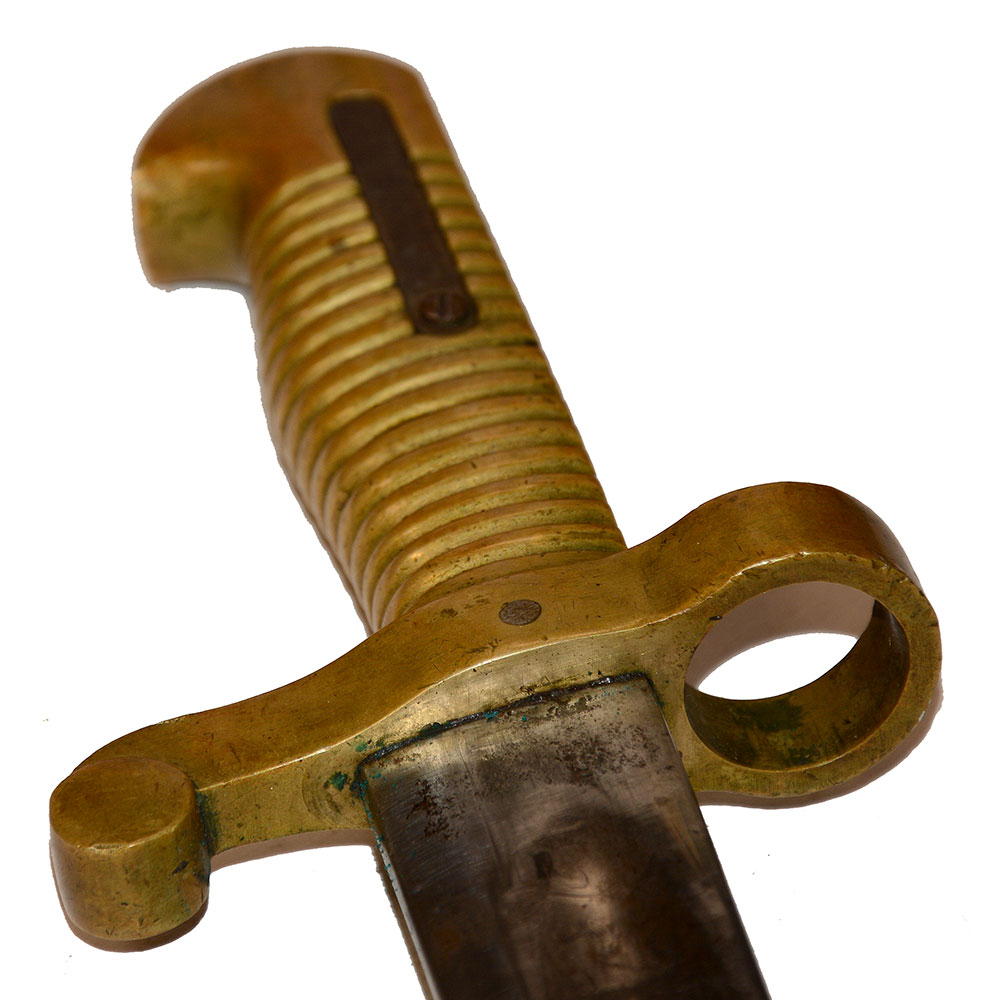
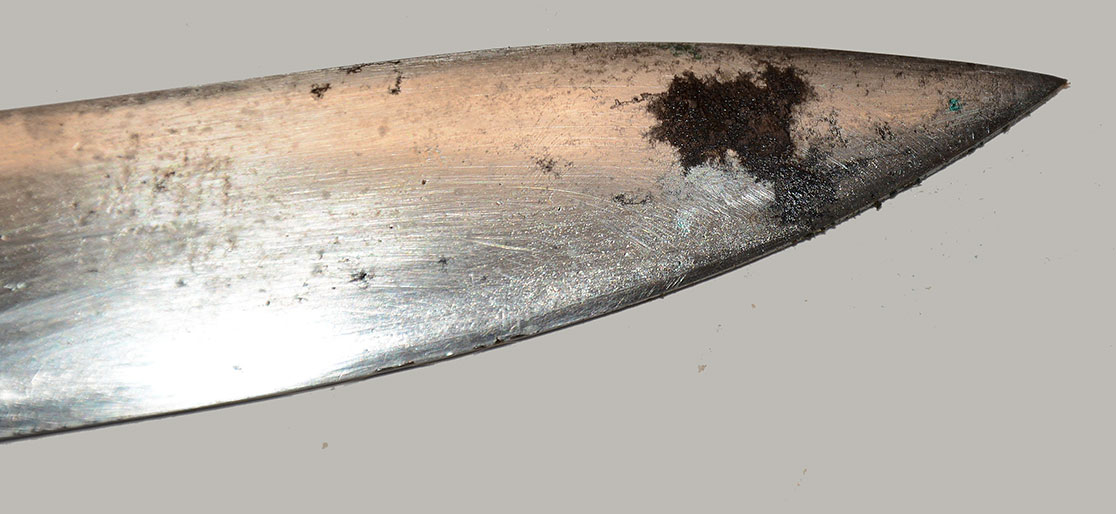
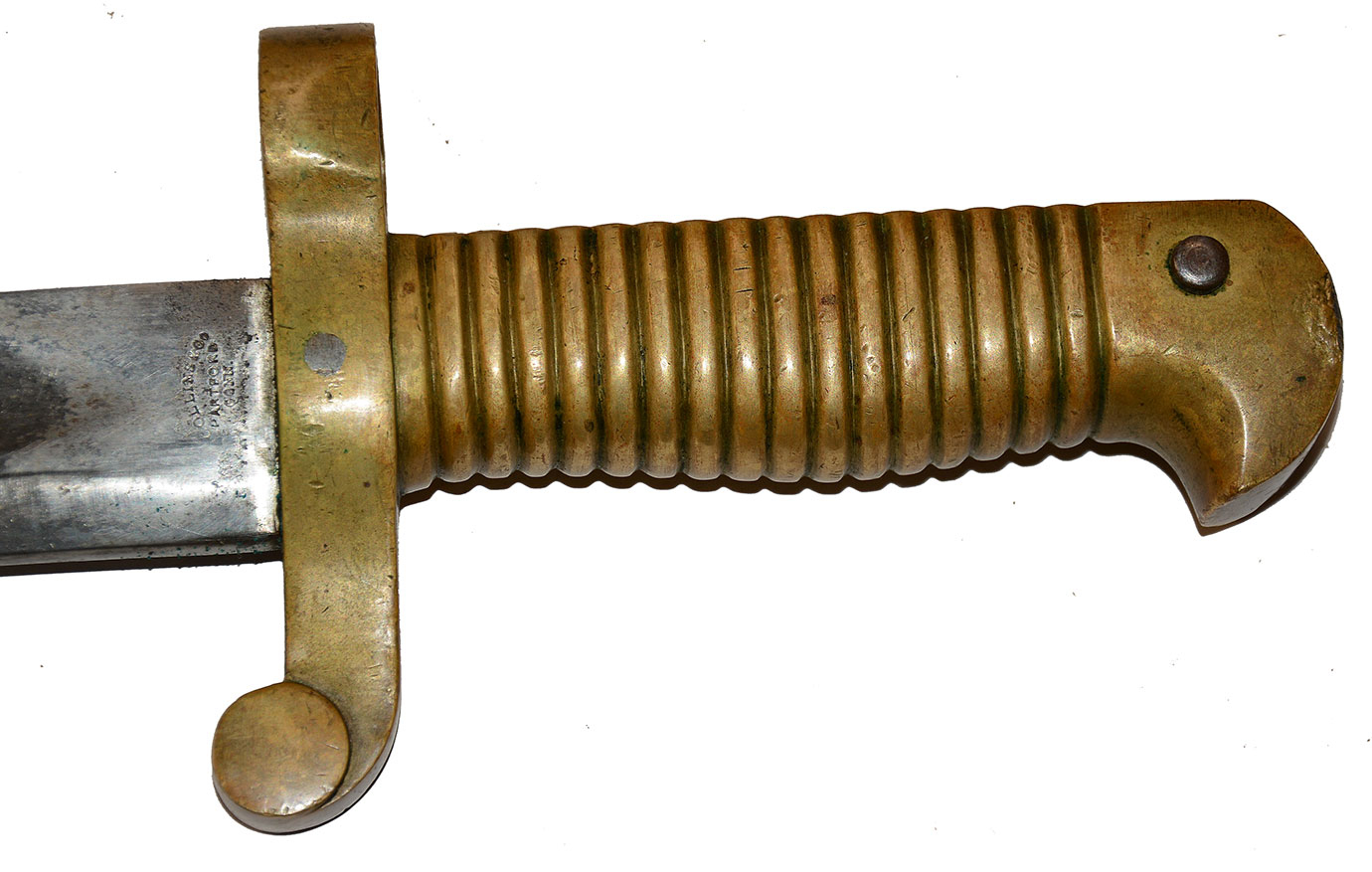
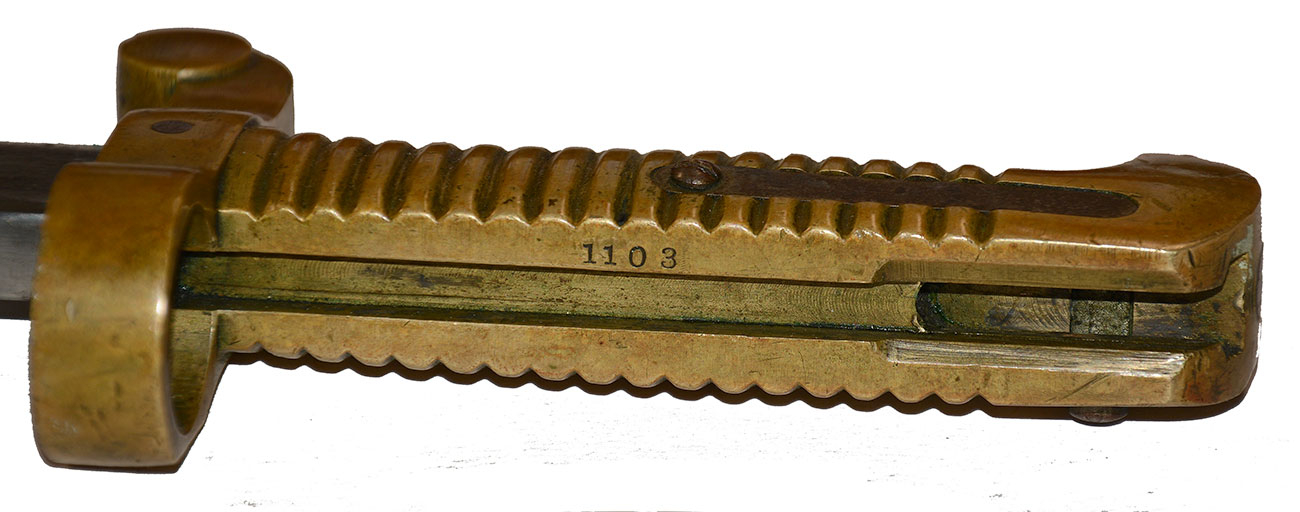
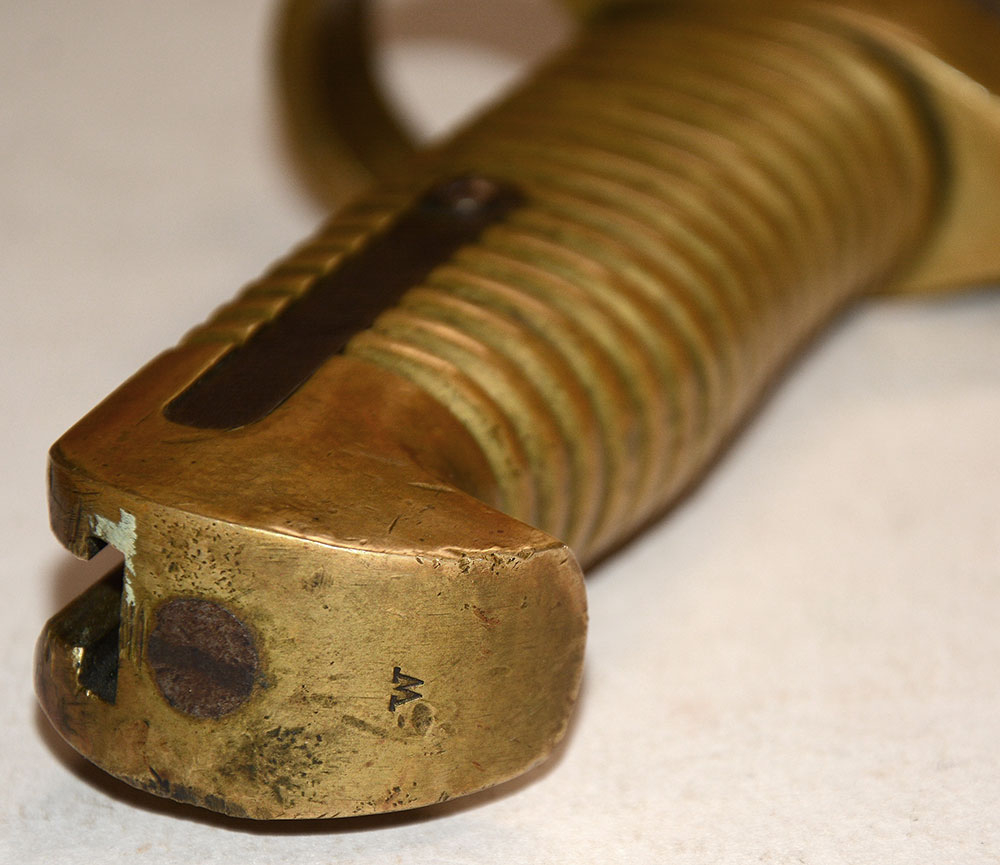
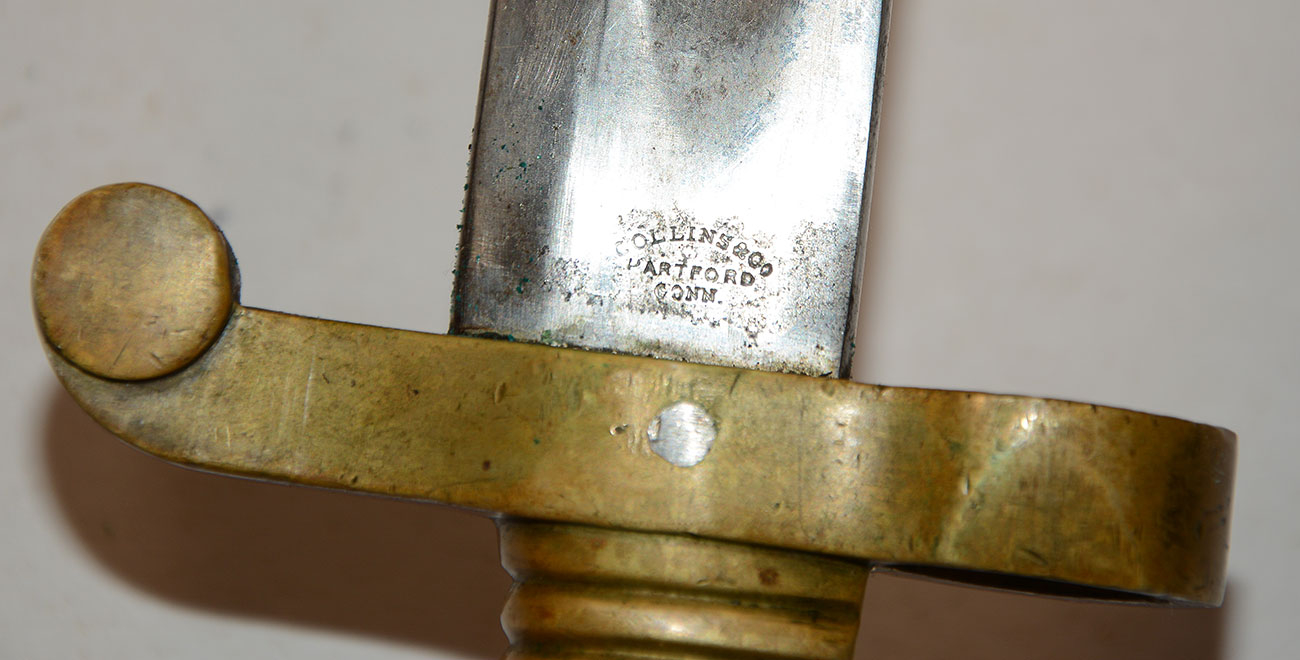
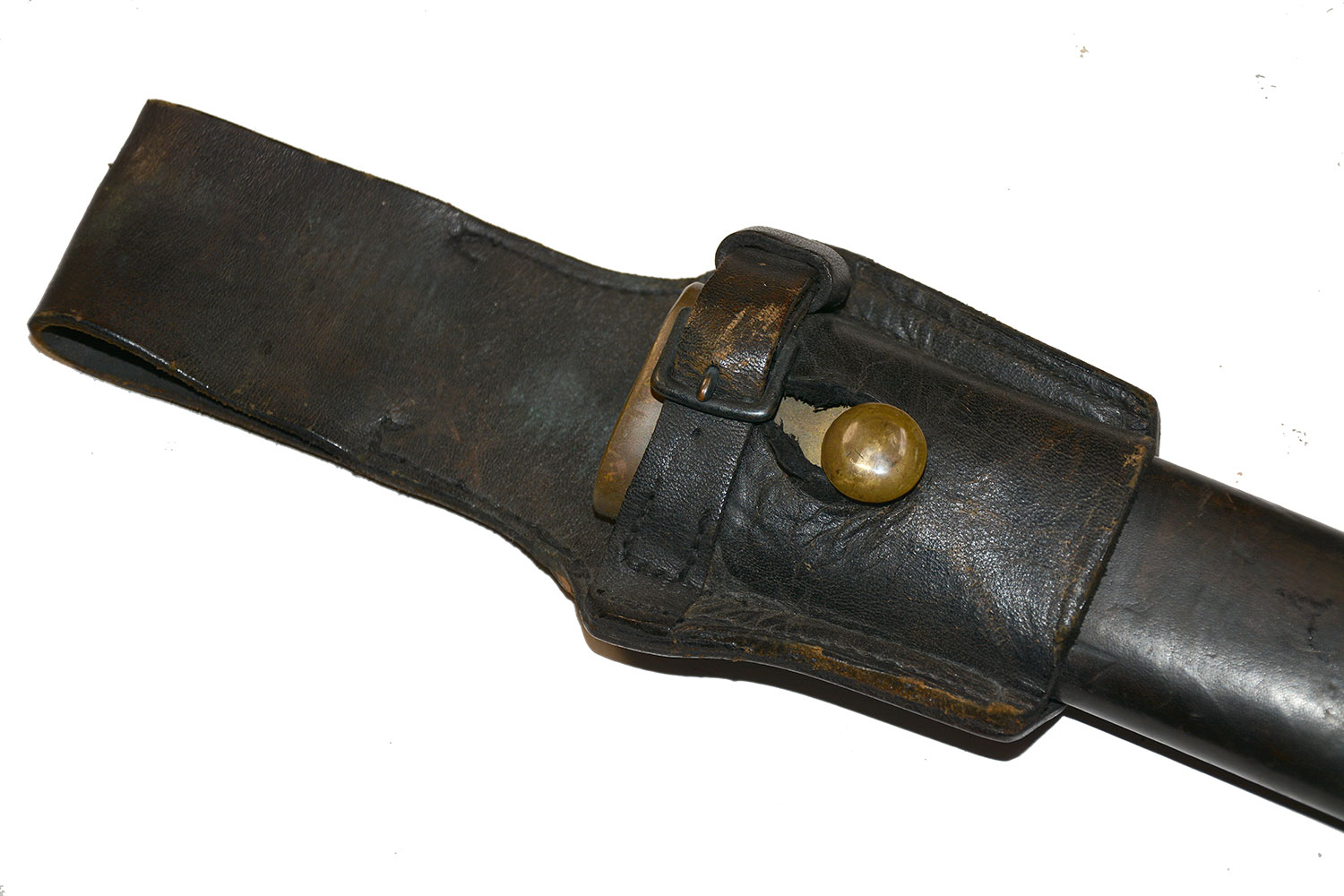
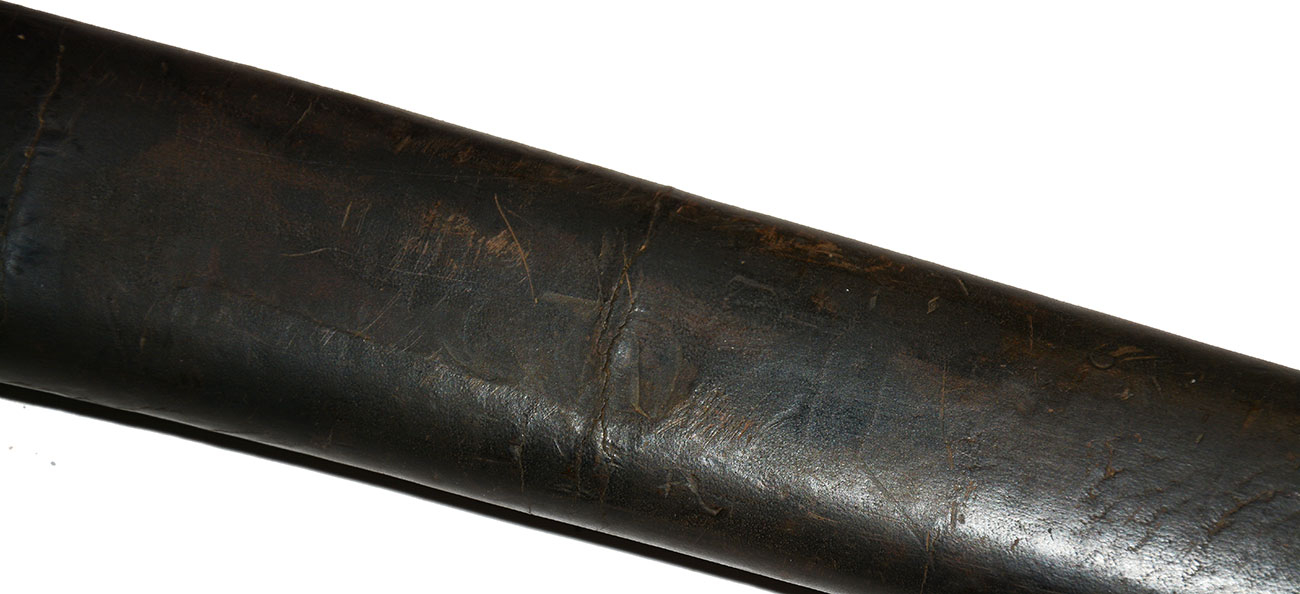
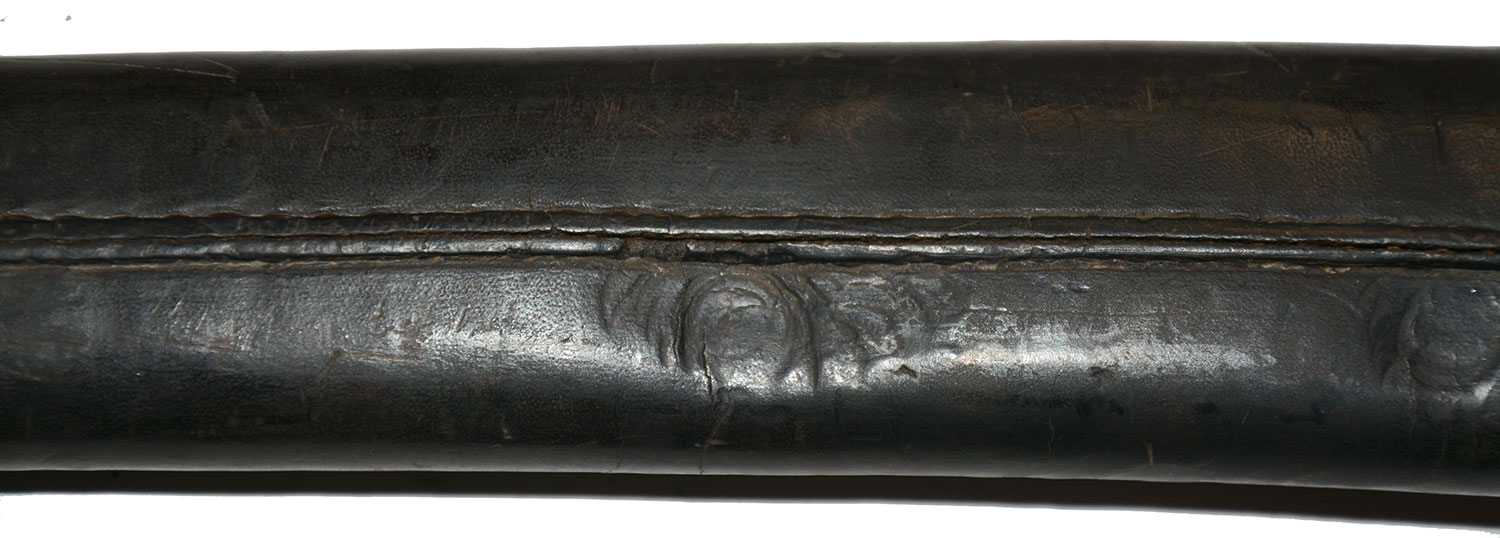
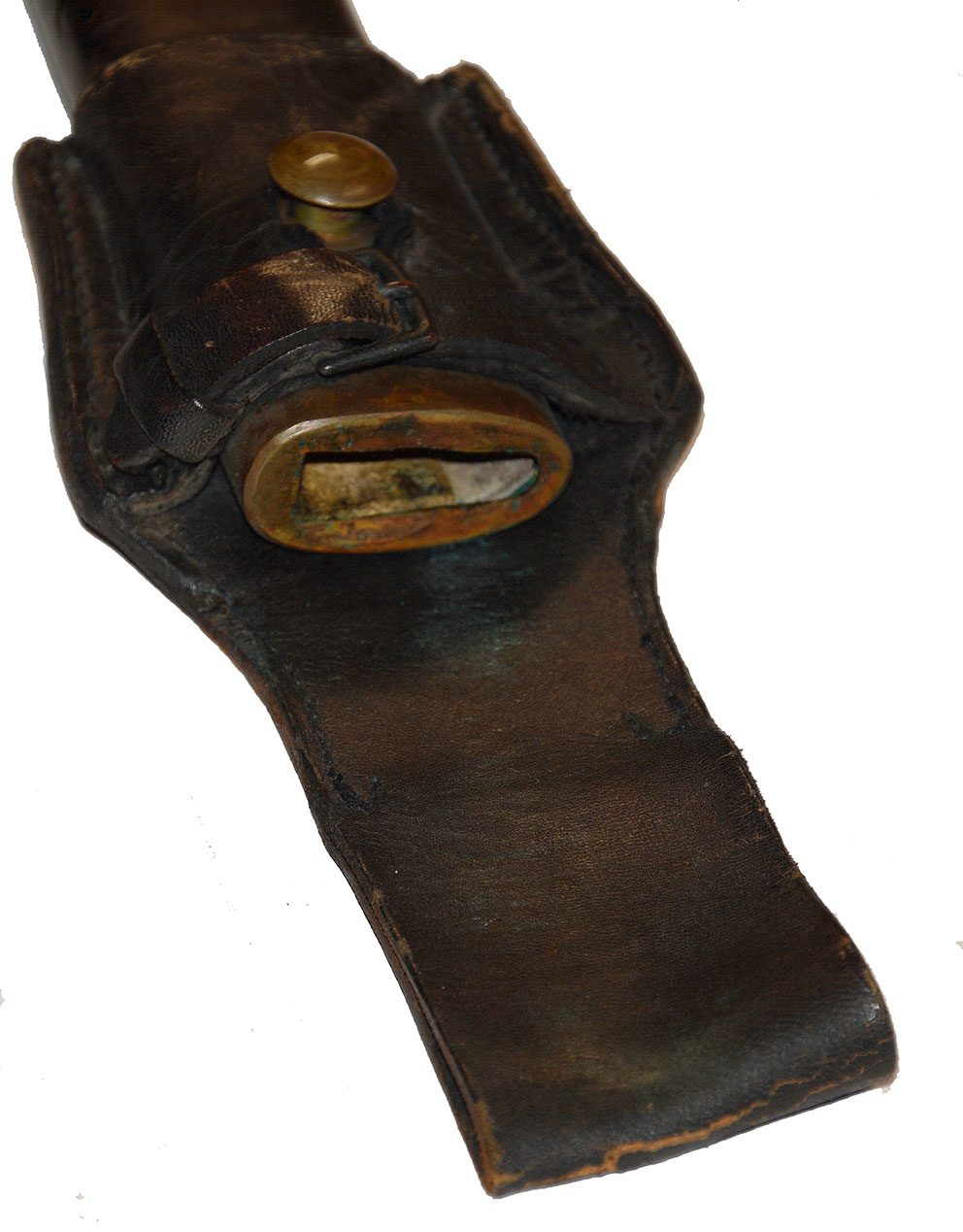

$4,995.00 SOLD
Quantity Available: None
Item Code: 2022-2282
This rifle is in very good condition, unusual for a long arm that is usually seen in lesser condition from ship-board use and exposure, and navy storage. It is complete and all original, with the correct ramrod and unique rear sight, and comes with an original Whitney Plymouth sword bayonet in equally good condition that still has its original scabbard. The wood has nice light brown color and finish, good edges, tight fit to the metal and a visible “F.C.W.” inspector’s cartouche on the counterpane for Franklin C. Warner, a civilian employee of the U.S.N. Bureau of Ordnance. (He was hired to inspect navy arms and detailed to the Whitney plant in May 1863, where he served until completion of the contract, after which he received a commission in the navy.) The wood has just a few light handling marks- a small check on the left wrist, small light dings on the counterpane, and some uneven wear and small chips to the ramrod channel. The edges to the lock apron, counterpane, and along the barrel are very good. We see just one small pressure dent at the tip of the lockplate and a tiny bit of chipping at the end of the breechplug tang. None of these are very noticeable.
The metal is excellent, with smooth surface showing bright with just some light brown stains at the tang screw and breech in the recesses, and crisp markings. Both sights are in place, with the rear showing lots of muted blue. All bands, springs, swivels and rod are in place and correct, as is the bayonet lug and guide, etc. The breechplug tang is serial numbered 8874, indicating likely delivery in the April 1864 shipment of 1,000 rifles, with completion of the contract the next month. The lockplate is crisply dated 1864 to the rear of the hammer. The barrel has a matching 1864 date. Forward of the hammer the lock bears the correct second type marking using a smaller eagle over a U.S. with “WHITNEY-VILLE” underneath and slightly forward. The barrel also shows V/P/[eaglehead] proofs on the left breech and “F.C.W.” inspector initials on the left flat, matching those in the wood. The nipple is not battered. The mechanics are excellent with a crisp action. The bore is bright and clean, with no dirt or pitting.
This comes with a correct Whitney Plymouth navy rifle bayonet in very good, matching condition. The hilt has an untouched brass tone with only minor handling marks and a nice surface showing a crisp 1103 serial number stamped next to the stud-guide groove indicating it was delivered in an 1863 shipment. The pommel also bears a “W” stamp on its end, one of several inspection marks used on the bayonets by Franklin C. Warner, who inspected the rifle as well. The blade has a good edge and point, shows bright mixed with scattered small gray spots, and has clear “Collins & Co. / Hartford / Conn.” markings on the reverse ricasso. We see just some shallow salt-and-peppering at the ricasso on either side. It comes in its original brass-mounted black leather scabbard, with aged brass tones to the mounts and the leather showing a good surface and tight rear seam. This is housed in an Enfield-style belt frog using a small cross-strap and buckle running across the top of the stud button to retain the scabbard. The leather of scabbard and frog matches.
The Whitney Model 1861 Navy Rifle was the brainchild of John A. Dahlgren, who began developing it in 1856 and undertook testing on an 1858 voyage of the USS Plymouth, which served to test naval ordnance and gave the rifle its nickname. Dahlgren wanted a large-caliber short rifle for shipboard use that used a heavy barrel to compensate for the recoil and might carry a Bowie-knife style bayonet that would be useful has a hand-held weapon and for other shipboard tasks. As fully developed and produced by Whitney on a July 1861 contract, the rifle was somewhat lighter than Dahlgren wanted, but mounted a 34-inch .69 caliber rifled barrel secured by two bands, with a long French style rear sight graduated to 1,000 yards. Dahlgren’s Bowie knife bayonet was given a life of its own, and the rifles were instead supplied with a brass hilted sword bayonet made by Collins and carrying a long 22.5 inch blade to make up for the rifle’s short barrel in close combat against musket-armed opponents.
Whitney’s contract called for 10,000 rifles with monthly deliveries starting in February 1862, but difficulties in obtaining barrels delayed production and delivery for a year. Five sample rifles were delivered in October 1862 and regular deliveries started in February 1863, with 5,300 delivered that year and the remaining 4,695 by May18, 1864.
These rifles were delivered to a depot in New Haven, distributed to Navy yards from there, and widely issued to navy vessels for use in shipboard actions, patrol duty, landing parties and expeditions. McAulay lists the USS Nansemond, William Bacon, and Eutaw in the North Atlantic Blockading Squadron as among the first recipients in 1863, and thirty more vessels in 1864, including the Pawnee and Mendota. They saw service in small boat actions, in heavier fighting such as the attack of the Albemarle on the USS Mattabesset, and also in shore actions such as Tulfinny Crossroads in December 1864, where the color-bearer of the 5th Georgia was brought down by a Plymouth rifle in the hands of a sailor assigned to the howitzer section of a mixed force of sailors and marines attempting to cut the Charleston and Savannah Railroad. The rifles seem to have been well regarded. Some were even requested by the Potomac Flotilla to replace their Spencers, whose rimfire ammunition proved dangerous in rough navy handling. This is very nice example of these impressive rifles and one that shows off extremely well with its correct bayonet. [sr] [ph:L]
DISCLAIMER: All firearms are sold as collector's items only - we do not accept responsibility as to the shooting safety or reliability of any antique firearm. All firearms are described as accurately as possible, given the restraints of a catalog listing length. We want satisfied customers & often "under" describe the weapons. Any city or state regulations regarding owning antique firearms are the responsibility of the purchaser. All firearms are "mechanically perfect" unless noted, but again, are NOT warranted as safe to fire.
~~~~~~~~~~~~~~~~~~~~~~~~~~~~~~~~~~~
THIS ITEM, AS WITH ALL OTHER ITEMS AVAILABLE ON OUR WEB SITE,
MAY BE PURCHASED THROUGH OUR LAYAWAY PROGRAM.
CLICK HERE FOR OUR POLICIES AND TERMS.
THANK YOU!
Inquire About WHITNEY PLYMOUTH NAVY RIFLE WITH BAYONET AND SCABBARD
Most Popular
Historical Firearms Stolen From The National Civil War Museum In Harrisburg, Pa »
Theft From Gravesite Of Gen. John Reynolds »
Selection Of Unframed Prints By Don Troiani »
Fine Condition Brass Infantry Bugle Insignia »
Large English Bowie Knife With Sheath 1870’S – 1880’S »
Imported (Clauberg) Us Model 1860 Light Cavalry Officer's Saber »
featured item
CONFEDERATE GENERAL THOMAS “STONEWALL” JACKSON’S SIGNED, PERSONAL COPY OF A COMPLETE TREATISE ON FIELD FORTIFICATIONS
Thomas "Stonewall" Jackson Signed Copy of His West Point Textbook, A Complete Treatise on Field Fortifications. The future Confederate general's bold signature, signed "Thos. J. Jackson" ca. 1846, occurs at the top of the front free endpaper. The… (1179-682). Learn More »


